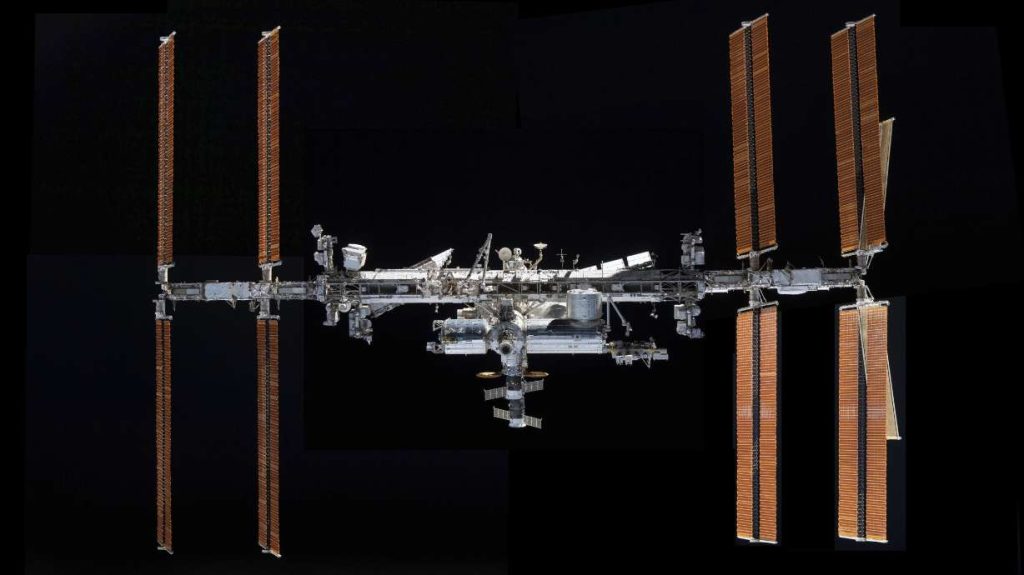CAPE CANAVERAL, Fla. — SpaceX plans to use a powerfully modified capsule to deorbit the International Space Station once the vast laboratory’s lifespan is up.
NASA and Elon Musk’s company on Wednesday outlined a plan to burn up the space station on re-entry and sink what’s left into the ocean, ideally in early 2031, when the station will enter its 32nd year. NASA has rejected other options, such as dismantling the station and bringing everything back to Earth or handing the keys over to someone else.
NASA to SpaceX $843 million contract To destroy the space station, the largest structure ever constructed outside of Earth.
Future work and challenges are outlined below:
The space station is already showing signs of aging. Russia and the United States launched the first components in late 1998, and astronauts moved in two years later. Europe and Japan added their own components, and Canada contributed a robotic arm. By the time NASA’s shuttles retired in 2011, the station had grown to the size of a football field and weighed nearly a million pounds.
NASA expects the space station to last until at least 2030. The goal is for private companies to launch their own space stations by then, with NASA being one of many customers. This strategy, already in place for the transport of cargo and crew to the space station, would allow NASA to focus on trips to the Moon and Mars. NASA could also decide to extend the life of the space station if no commercial base has yet been launched. The aim would be to create an overlap period so that scientific research is not interrupted.
NASA considered dismantling the space station and returning it to Earth, or having private companies salvage parts for their own planned bases. But NASA said the station wasn’t meant to be dismantled in orbit, and such an operation would be expensive and dangerous for the astronauts doing the dismantling. Plus, you can’t get everything off a spacecraft as big as NASA’s old shuttles. Another option would be to lift the empty station into a higher, more stable orbit, but that was also rejected due to logistical challenges and the increased risk of space debris.
Visiting spacecraft periodically raise the altitude of the space station to keep it in orbit at about 260 miles, otherwise it would lose altitude and fall out of orbit uncontrollably. NASA wants to ensure a safe re-entry into a remote area in the South Pacific or over the Indian Ocean, which means launching the spacecraft, docking it with the station and guiding it to a submerged spot.
NASA expects denser debris ranging in size from a microwave to a sedan to survive in the narrow debris zone, 1,200 miles long. NASA and its partners considered using three Russian resupply ships for the job, but needed a more rugged spacecraft. A call was made to industry, and SpaceX was awarded the contract for the deorbiter in June.
SpaceX plans to use the standard Dragon capsule to ferry supplies and astronauts to the space station, but with a much larger trunk that can accommodate 46 engines and more than 35,000 pounds of fuel, a record. SpaceX’s Sarah Walker said the challenge will be to build a spacecraft strong enough to guide the station while withstanding the tugs and forces of increased atmospheric drag during the final descent.
According to NASA, the spacecraft will require a very powerful rocket just to get into orbit. The capsule will be launched a year and a half before the station’s scheduled end. The astronauts will remain on board as the capsule is gradually lowered. Six months before the station’s destruction, the crew will abandon the ship and return home. Once the station has descended to an altitude of about 137 miles, Dragon will lower it four days later.
NASA’s first space station, Skylab, crashed in 1979, showering debris over Australia and the surrounding Pacific Ocean. NASA hoped that one of the crew of the first Space Shuttle could attach a rocket to control Skylab’s descent or accelerate it into orbit. However, the shuttle was not ready at the time, and its first flight did not take place until 1981. Ground controllers managed to slowly drop Skylab into the Indian Ocean, but some of the debris fell in Western Australia as well. Russia is more experienced when it comes to landing space stations. Mir operated for 15 years before re-entering the Pacific Ocean in 2001 in a fire. Several Salyut stations had disappeared before that.
NASA hopes to bring back small items from inside the space station, such as the spacecraft’s bell, log, patched panels and other memorabilia, for display in a museum. These could be brought down by a SpaceX resupply ship in the final year or two of the mission. “Unfortunately, we can’t bring back the really big items,” says NASA’s Ken Bowersox. “The sentimental part is that we’d love to preserve them somehow.” But the most practical way, he says, is to destructively bring down everything in one go.


